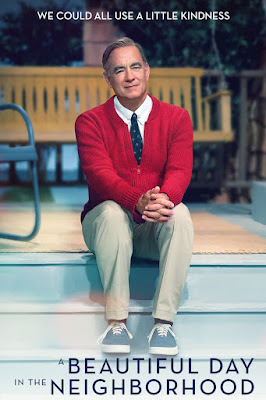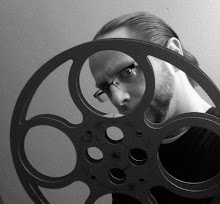After 40-plus years in the business, Martin Scorsese has earned the right to be called one of our most celebrated filmmakers. His movies have won Oscars, crossed and defined genres, altered pop culture, and inspired more than one generation of movie fans and filmmakers. His newest film, THE IRISHMAN, is currently making its rounds to rave reviews, which brings up the discussion of his best films. Here now is Reel Speak’s Top 10 Best Films of Martin Scorsese.
10. CASINO (1995)
Making movies based on the lives of real-life gangsters has been Scorsese’s favorite thing to do, and CASINO was one of many. Based the non-fiction book detailing the mob’s involvement at a Las Vegas casino, the film re-united frequent Scorsese collaborators Robert DeNiro and Joe Pesci, and the result is an explosive story of trust and betrayal. Epic in its telling with a powerful punch, it is that cautionary tale of excess that Scorsese loves to tour.
9. SILENCE (2016)
The first of two late-career masterpieces. A long, grueling, and cerebral journey through 17th century Japan where two priests search for their missing comrade, SILENCE is a deep exploration of faith while going up against impossible odds…including death and torture. A slow burner, it takes a long time to unfold, and has the fingerprint of a filmmaker who has learned patience over the years. Andrew Garfield, Adam Driver, and Liam Neeson turn in excellent performances.
8. THE KING OF COMEDY (1982)
A journey through the mind of a wanna-be stand-up comic (DeNiro), who often confuses reality with his own fantasies. This film may show its age in places, but it stands as a relevant look at fame and how we treat our idols. DeNiro creates a likeable, yet messed-up character; one of many troubled souls that Scorsese would explore throughout his career.
7. THE AVIATOR (2004)
Howard Hugues; the filmmaker, aviator, billionaire, playboy, and genius…gets his life story brought to the screen by Scorsese. This is more of a celebration of Hughes than a deep look at what made him tick, but that was probably the whole point. Hughes was a major celebrity in his time, one that Scorsese likely looked up to. Leonardo DiCaprio and Cate Blanchett are electric, and the film also serves as a love letter to a glamorous Hollywood age long gone. An Oscar contender in 2004, it had 11 nominations and won five, including Best Supporting Actress for Blanchett’s dazzling portrayal of Katharine Hepburn.
6. THE IRISHMAN (2019)
The second of his two late-career masterpieces. Based on the life of gangster and hit-man Frank Sheeran, Scorsese once again travels into the underworld of organized crime, and does so by re-uniting with old friends DeNiro, Pesci, Harvey Keitel, and for the first time…Al Pacino. A deep look at mobsters and a slice of American history, THE IRISHMAN hasn’t had the test of time put to it yet, but it’s hard to think this film would not be held in high regard in 10 years time.
5. GANGS OF NEW YORK (2002)
After making so many movies about organized crime, it perfect made sense that Scorsese would make one about its origins. GANGS OF NEW YORK is a historical epic that looks at early immigration and a very violent America, while serving as a decades-long revenge story. The film is a feat in production design, cinematography, and acting…with Leonardo DiCaprio, Daniel Day-Lewis, and Cameron Diaz lighting up the screen. This Blogger’s personal favorite.
4. TAXI DRIVER (1976)
Troubled souls who are one bad day away from causing more trouble has always been a favorite character-type of Scorsese’s, and he found his most iconic one in Travis Bickle…as played by Robert DeNiro. New York City is portrayed as the worst place on Earth, and when Bickle finally has his one bad day, it all comes crashing down in a way that is satisfying because everything that came before it counts, and counts hard.
3. RAGING BULL (1980)
This has been a hard movie to love, as it is brutal and uncomfortable to watch…but maybe that’s what makes it so damn good. DeNiro bulks up to play real-life boxer Jake LaMotta, a tortured soul who isn’t happy unless he’s beating someone up or is getting his own brains bashed in. It’s intense but stands one of the best dark character studies in cinema, with a monster of a performance by DeNiro and ruthless boxing scenes.
2. THE DEPARTED (2006)
Winner of four Academy Awards including Best Picture and Best Director for Scorsese. Leonardo DiCaprio plays an undercover cop looking to take down Boston’s leading gangster (a fantastic Jack Nicholson), while trying to figure out the identity of a rat (Matt Damon), in the Special Investigations. It’s the ultimate cat-and-mouse game on film, with plenty of twists and the enjoyment of watching cops and robbers go at it. Despite its tragic ending it is endlessly re-watchable and so much fun to take in.
1. GOODFELLAS (1990)

This may seem like a lazy choice, but it’s hard to ignore a film that has become so absorbed into our culture; from its sharp one-liners (funny how?), the montage of dead bodies set to the back-half of Layla, the famous tracking-shot into the Copacabana club, and iconic characters as played by DeNiro, Pesci, and Ray Liotta. Not to mention that without this film, there never would have been a SOPRANOS. Perhaps one of the best mobster pictures ever made, it takes a young man who just wants to be a gangster and turns it into the American dream, and lets us know that crooks absolutely love the lives that they lead. It would be unfair to say that Scorsese has “glamorized’ organized crime and mobsters over the years, because in GOODFELLAS, just like in all of his mob-films, none of these guys have happy endings. But despite that, Scorsese really makes us want to hang out with them…and he never did it better than here. It’s wildly entertaining, sharply edited, beautifully acted, and not shy to break our hearts when it needs to. This is the film that his name is the most often connected to, and for good reasons.
Reel Speak's Top 10 Martin Scorsese Films
- GOODFELLAS
- THE DEPARTED
- RAGING BULL
- TAXI DRIVER
- GANGS OF NEW YORK
- THE IRISHMAN
- THE AVIATOR
- KING OF COMEDY
- SILENCE
- CASINO



















